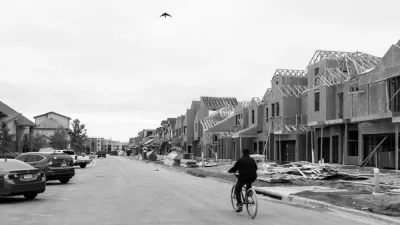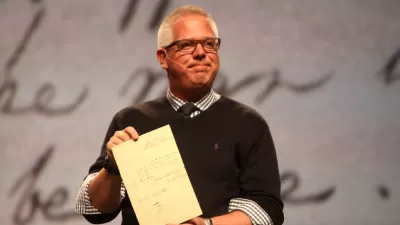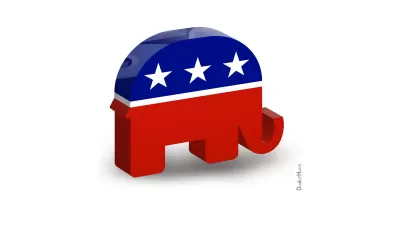Although recent studies and controversies such as Agenda 21 make anti-urban politics seem like a right wing commodity, a new book details the implications of a long history of bi-partisan anti-urbanism.
Rebecca Onion introduces a new book by Steve Conn, titled Americans Against the City: Anti-Urbanism in the Twentieth Century, which argues that "anti-urban movements have always benefited those who already enjoy social privilege, while leaving behind immigrants, ethnic minorities, and the poor." It follows, according to Conn, that until the entire country abandons anti-urban politics, some of our largest and most difficult problems are doomed to persist.
To support the argument, Conn builds a history that complicates the narrative of the marriage between right wing and anti-urban politics: "a new history shows that anti-urban feelings have cut a wide swath through American history and politics. Conservatives have described the city as a hotbed of vice and crime, with an alienating level of diversity and too much government regulation. Over time, plenty of liberals have crusaded against city living as well, arguing for smaller-scale, decentralized towns where people could form what they saw as more authentic communities."
Onion's prose precedes an interview with Conn, in which they discuss some of the more prominent anti-urban liberals (e.g., FDR and Frank Lloyd Wright) and the racial implications of anti-urban politics.
FULL STORY: A brief history of hating cities

Maui's Vacation Rental Debate Turns Ugly
Verbal attacks, misinformation campaigns and fistfights plague a high-stakes debate to convert thousands of vacation rentals into long-term housing.

Planetizen Federal Action Tracker
A weekly monitor of how Trump’s orders and actions are impacting planners and planning in America.

San Francisco Suspends Traffic Calming Amidst Record Deaths
Citing “a challenging fiscal landscape,” the city will cease the program on the heels of 42 traffic deaths, including 24 pedestrians.

Defunct Pittsburgh Power Plant to Become Residential Tower
A decommissioned steam heat plant will be redeveloped into almost 100 affordable housing units.

Trump Prompts Restructuring of Transportation Research Board in “Unprecedented Overreach”
The TRB has eliminated more than half of its committees including those focused on climate, equity, and cities.

Amtrak Rolls Out New Orleans to Alabama “Mardi Gras” Train
The new service will operate morning and evening departures between Mobile and New Orleans.
Urban Design for Planners 1: Software Tools
This six-course series explores essential urban design concepts using open source software and equips planners with the tools they need to participate fully in the urban design process.
Planning for Universal Design
Learn the tools for implementing Universal Design in planning regulations.
Heyer Gruel & Associates PA
JM Goldson LLC
Custer County Colorado
City of Camden Redevelopment Agency
City of Astoria
Transportation Research & Education Center (TREC) at Portland State University
Jefferson Parish Government
Camden Redevelopment Agency
City of Claremont





























